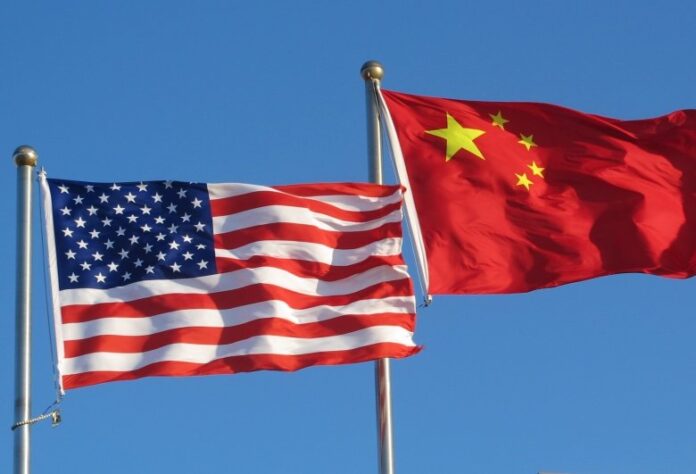Author: Parag Khanna
Affiliation: Lee Kuan Yew School of Public Policy at the National University of Singapore
Organization/Publisher: The National Interest
Date/Place: March 6, 2021/USA
Type of Literature: Article
Word Count: 1980
Link:https://nationalinterest.org/feature/new-%E2%80%98end-history%E2%80%99-179347
Keywords: Geopolitics, Political Science, End of History, Geopolitical Entropy, and the Asian democratic technocracy
Brief:
Parag Khanna argues that the “new end of history” will not be the triumph of a single ideology as it was with Fukuyama’s world, since it is impossible today for an ideological model to prevail at the expense of others because of the complexities of our new world. Instead, it is imperative to acknowledge that each stage of history contains the seeds of the dynamics of the next stage. Moreover, the author expresses here his admiration for the ability of geopolitics to explain the yesterday/today’s worlds and predict tomorrow’s world much more than the “ideological blinders of political science.” Before presenting his perspective regarding today’s world, the author provides a brief evaluation of Fukuyama’s essay “The End of History?” which he wrote thirty years ago, affirming that Fukuyama was making a tentative hypothesis (as indicated by the question mark at the end of the title), and not the strident assertion attributed to him in subsequent years. Western liberal democracy centered on the victorious United States after the Cold War was the end of history for Fukuyama, just as the post-Napoleon era of the 19th century with the Prussia-centered state was the end of history for Hegel and Max Weber. The author asserts that it was difficult in 1989 to see the structural change taking place, and the scenario of “a multipolar world” was very remote due to the focus of many scholars, including Fukuyama, on the actual convergence of economic interests. The rapid economic opening of China and the “new political thinking” of the late Soviets were evidence that other great powers would not pose ideological threats against Western capitalism. However, geopolitics scholars were able to see the global landscape in a different way. Since the 1970s, they had indicated the emergence of the European Common Market and Industrial Japan as independent poles of power despite their affiliation with the US-led alliance systems. The explanatory and predictive powers of geopolitics are due to its materialism, centered on self-interest and power maximization; in contrast, political philosophy (political theory) is idealist, and has emphasized ideological affinity and common values (embodied in approaches such as liberal institutionalism and democratic peace). In other words, “while political science is about civilizations, geopolitics is about empires. Civilizations become more interesting to geopolitical scholars when their identity is weaponized into imperial behavior,” as expressed in the Clash of Civilizations by Huntington. Scholars of Geopolitics have seen multipolarity coming long before today’s vogue. Thus, the author believes that the “framework of great-power competition,” straight out of the annals of geopolitics, is the only analytical framework that meets consensus in the West today. Depending on the comprehensive analytical framework presented by geopolitics, the author presents his vision of today’s world, as it is a complex world in which the West witnesses division and internal competition. Europe, for example, will not trust US global leadership despite Biden’s promises for reforms, as these two geopolitical allies will remain geo-economically competitive. Regarding the eastern hemisphere with the strong Asian rise, it confirms the gradual geopolitical tendency towards complexity, disorder, and unpredictability (geopolitical entropy). “China’s unshakeable presence as a superpower affirms that geopolitics has become, for the first time in history, both multipolar and multi-civilizational,” but this does not make China a new end to history, as China represents only 15% of global GDP, and is geographically surrounded by 12 neighbors with whom it mostly has hostile relations, despite their strong economic-commercial relations. The author asserts that Asia has emerged from the shadow of China and the ideological debate related to the “end of history,” and is heading to consolidate what he calls “the Asian democratic technocracy,” which has become a global model in the combination of efficiency and transparency and achieving a balance between rationality and freedom. Countries such as Japan, South Korea, and Taiwan are likely to shine out to the world in what the author calls “the new Asian values of technocratic governance,” as their methods of governance are already gaining popularity in the West, especially after they have proven their worth in dealing with the Coronavirus pandemic. The author concludes that we have arrived at “a landscape of four centers of global leadership: the US, Europe, China, and democratic Asia. Geopolitically, it’s three against one. Economically, it’s every power for itself. And ideologically, each holds itself to be superior to the rest.” Therefore, it has become clear today that no model will prevail at the expense of others, as today’s complex world “presents a series of ever-unfolding dialectical collisions producing novel outcomes that pull the system in new directions.”
By: Djallel Khechib, CIGA Senior Research Associate




